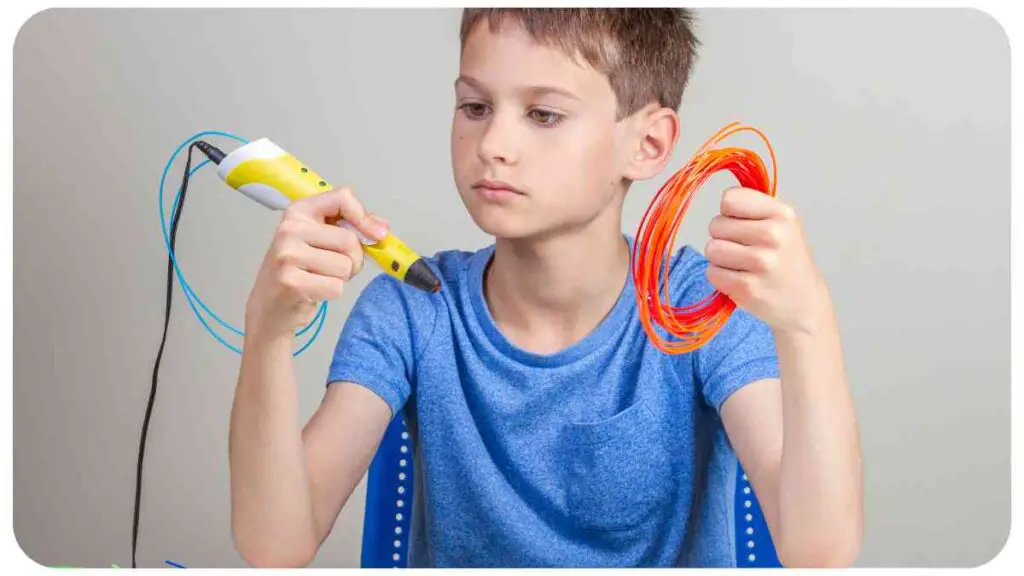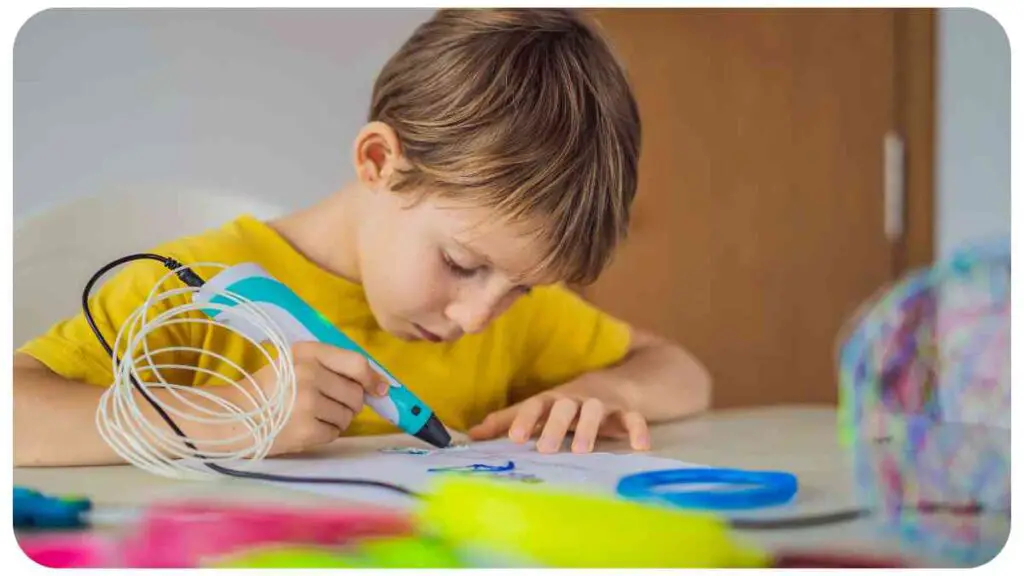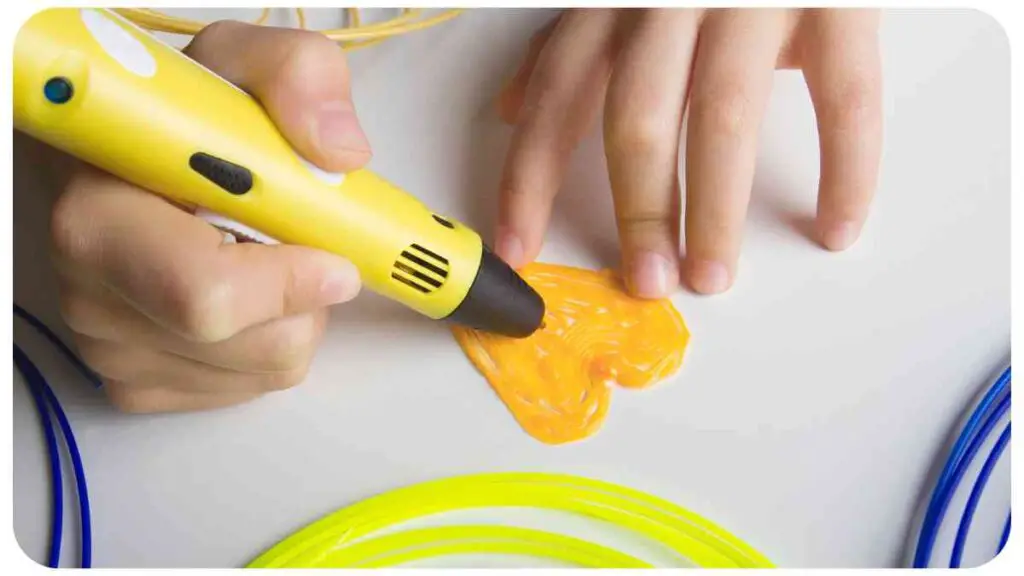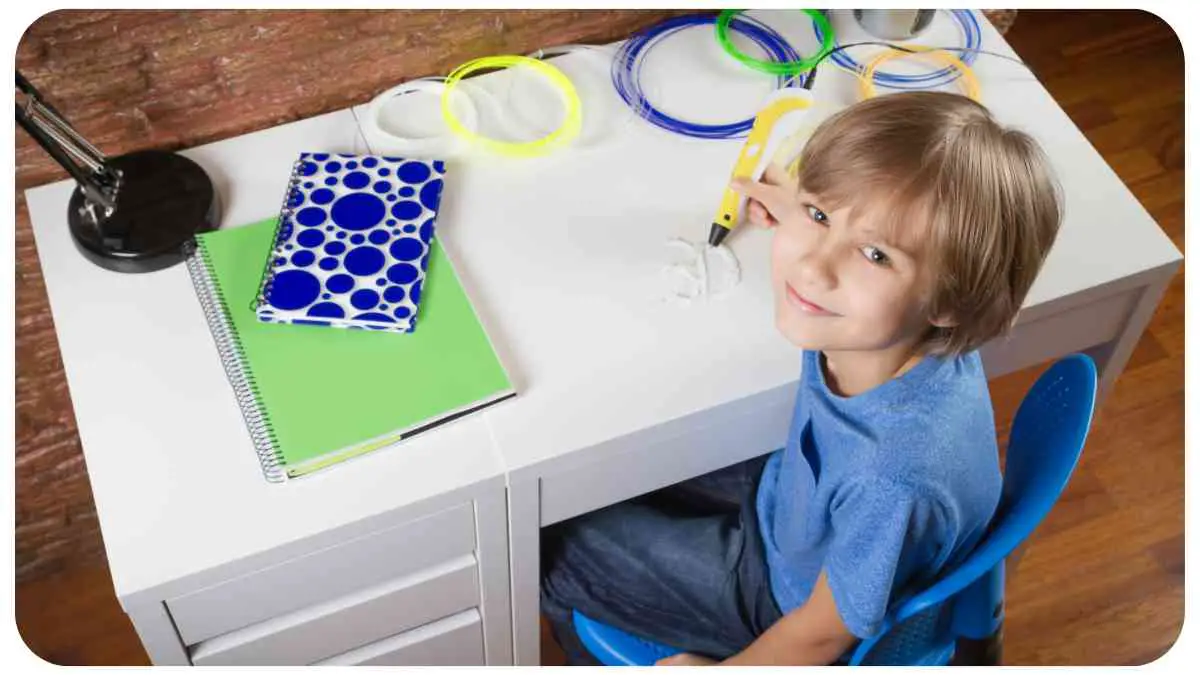Welcome to our comprehensive guide on the safety of 3D printing pens. With their ability to bring imagination to life, these pens have gained popularity among artists, hobbyists, and DIY enthusiasts. However, like any tool, concerns about their safety should not be overlooked.
In this article, we will delve into the potential hazards associated with 3D printing pens and provide practical tips to ensure their safe usage. By blending our expertise in the field and drawing from personal experiences, we aim to equip you with valuable insights and advice.
| Key Points |
|---|
| Safety precautions should be followed when using a 3D printing pen, especially when children are involved. |
| Operating the pen in a well-ventilated area can help minimize the inhalation of potentially harmful fumes. |
| Handle the pen with care to avoid burns and injuries, and always unplug it when not in use. |
| Wearing protective gear, such as gloves and eyewear, can provide additional safety while using the pen. |
| When purchasing a 3D printing pen, consider certifications, safety features, and brand reputation. |
| Non-toxic filaments should be prioritized to ensure a safe environment when using the pen. |
| Store the 3D printing pen properly in a cool and dry place to prevent electrical or safety issues. |
| Benefits of using a 3D printing pen include enhancing creativity, educational value, prototyping, and DIY arts and crafts. |
| It is important to strike a balance between creativity and safety when using a 3D printing pen. |
What Are 3D Printing Pens?

Before we dive into the safety aspects, let’s understand what 3D printing pens are. A 3D printing pen is a handheld device that allows you to create three-dimensional objects by extruding molten material through its nozzle.
This material, commonly known as filament, is heated and fed into the pen, which then cools rapidly to form solid structures. These pens offer a more free-form approach to 3D printing compared to traditional printers, giving users the ability to sketch, trace, and create intricate designs.
Building a scrapbooking collection with the right supplies is crucial for unleashing your creativity. Check out our Ultimate Guide to Choosing the Right Scrapbooking Supplies for expert tips and recommendations.
The Safety Concerns
While 3D printing pens offer numerous creative possibilities, it is crucial to be aware of the potential safety risks they pose. By understanding these concerns, you can take necessary precautions and ensure a safe and enjoyable experience. Let’s explore the main safety considerations associated with 3D printing pens.
1. Heat-related Hazards
The operating temperatures of 3D printing pens can reach high levels, which may pose a risk of burns. Accidental contact with the heated nozzle or filament can lead to painful injuries, especially for children and those with limited dexterity.
| Heat-related Hazards | Safety Tips |
| Risk of burns | Always handle the pen with caution and avoid touching hot surfaces. |
| Potential eye injury | Wear protective eyewear while using the pen. |
| Inhalation dangers | Use the pen in a well-ventilated area to minimize exposure to fumes. |
2. Electrical Safety
Since 3D printing pens are electrical devices, it is crucial to prioritize electrical safety. Faulty wiring or improper usage can lead to electric shocks or even fire hazards.
| Electrical Safety | Safety Tips |
| Risk of electrical shock | Avoid using the pen near water or wet surfaces. |
| Fire hazards | Unplug the pen when not in use and never leave it unattended. |
3. Emission of Hazardous Fumes
Some filaments used in 3D printing pens release potentially harmful fumes when heated. These fumes can irritate the respiratory system and cause discomfort if inhaled in large quantities.
| Emission of Hazardous Fumes | Safety Tips |
| Inhalation dangers | Operate the pen in a well-ventilated area to minimize exposure to fumes. |
| Chemical exposure | Choose filaments that are labeled as non-toxic or low in emissions. |
4. Risk of Burns

As mentioned earlier, the heated nozzle of a 3D printing pen can cause burns. The risk increases when children or inexperienced users handle the pen without proper precautionary measures.
| Risk of Burns | Safety Tips |
| Potential eye injury | Wear safety gloves or finger guards to protect against burns. |
| Risk of burns | Keep the pen away from flammable materials or surfaces. |
Safety Precautions When Using a 3D Printing Pen
To ensure a safe and enjoyable experience with your 3D printing pen, it’s important to take several safety precautions. By following these guidelines, you can minimize the risks associated with using a 3D printing pen.
Create personalized albums and journals with our easy-to-follow DIY Scrapbooking guide. Explore techniques and unleash your artistic flair!
1. Supervise Children
If children are using a 3D printing pen, it’s crucial to provide close supervision. Ensure they understand the potential dangers and instruct them on proper usage. Children should also be taught to use the pen in a well-ventilated area and to avoid touching the heated components.
2. Use in a Well-Ventilated Area
To mitigate the risks associated with inhaling fumes emitted by certain filaments, always operate the pen in a well-ventilated environment. If possible, consider using a fume hood or working near an open window to improve air circulation.
3. Handle with Care
When using a 3D printing pen, always handle it with caution. Avoid touching the heated nozzle and other hot surfaces. Additionally, make sure to unplug the pen and allow it to cool down before attempting any maintenance or cleaning.
Preserve your precious memories in style with our comprehensive guide on Scrapbooking 101. Learn innovative techniques and make your memories last.
4. Wear Protective Gear
To protect yourself from potential burns or eye injuries, wear appropriate personal protective equipment. Safety gloves and finger guards can prevent burns, while protective eyewear safeguards against accidental filament splatters or incidents involving the heated nozzle.
5. Choose Non-Toxic Filaments
When selecting filaments for your 3D printing pen, prioritize those that are labeled as non-toxic or low in emissions. This reduces the risk of inhaling harmful chemicals and ensures a safer environment, especially when using the pen for extended periods.
6. Store Properly
Once you have finished using your 3D printing pen, store it safely and securely. Keep it out of reach of children and pets to prevent accidental misuse. Storing the pen in a cool and dry place will help prolong its lifespan and minimize the risk of any electrical or safety issues.
By following these safety precautions, you can significantly reduce the risks associated with using a 3D printing pen and enjoy the creative possibilities it offers. Now, let’s discuss how to choose a safe 3D printing pen.
How to Choose a Safe 3D Printing Pen?
When investing in a 3D printing pen, it’s important to prioritize safety. With various options available in the market, consider the following factors to ensure you select a pen that meets the necessary safety standards.
Craft one-of-a-kind jewelry pieces with our DIY Jewelry Making guide. Discover valuable tips and unleash your inner artist.
1. Look for Certifications
Before purchasing a 3D printing pen, check if it has obtained relevant certifications or safety approvals. Look for certifications like UL (Underwriters Laboratories) or CE (Conformité Européene) to ensure that the pen has undergone necessary safety tests and meets industry standards.
2. Read Product Reviews
To gain insights into the safety and performance of a particular 3D printing pen, read product reviews from reliable sources. Authentic user reviews can provide valuable information about any safety concerns or issues users have encountered.
3. Check Safety Features
Ensure the 3D printing pen you choose has built-in safety features. These may include features like automatic shut-off after a period of inactivity or mechanisms to prevent overheating. Checking for safety features will provide an additional layer of protection while using the pen.
Use non-toxic paints for your artistic projects. Our comprehensive guide on How to Use Non-Toxic Paints provides valuable insights and recommendations for a safe and fulfilling artistic experience.
4. Consider Brand Reputation
Opting for a well-known and reputable brand can assure you of a certain level of safety and quality. Established brands often prioritize safety in their product designs and have a solid track record of delivering reliable and safe 3D printing pens.
By considering these factors, you can select a 3D printing pen that not only sparks your creativity but also prioritizes your safety. In the next section, let’s explore the benefits of using a 3D printing pen.
Benefits of Using a 3D Printing Pen

3D printing pens offer a range of advantages beyond their creative potential. Let’s explore some of the benefits and applications of these unique tools.
1. Enhancing Creativity
Whether you’re an artist, designer, or simply someone who enjoys exploring their imagination, a 3D printing pen can serve as a powerful tool to bring your ideas to life. The freedom to create three-dimensional objects by hand allows for a more tactile and immersive experience, fostering creativity and innovation.
2. Educational Value
For educators and parents, 3D printing pens can be an excellent educational tool. They provide a hands-on approach to learning about design, engineering, and prototyping. Students can create and experiment with physical models and gain a deeper understanding of concepts that might otherwise be abstract.
3. Prototyping and Designing Projects
Architects, engineers, and product designers can benefit from the rapid prototyping capabilities of 3D printing pens. These pens allow for quick iterations and modifications to designs, allowing professionals to visualize ideas and concepts in a tangible way.
This facilitates the design process and helps identify potential improvements or flaws before committing to a final product.
| Benefits of Using a 3D Printing Pen | Examples |
| Enhancing Creativity | Sculpting miniature figurines, creating intricate jewelry designs |
| Educational Value | Teaching geometry or engineering principles through hands-on projects |
| Prototyping and Designing Projects | Creating architectural models or prototype parts |
| DIY Arts and Crafts | Making personalized decorations, custom phone cases |
4. DIY Arts and Crafts
For hobbyists and DIY enthusiasts, 3D printing pens offer endless possibilities for arts and crafts projects. Whether it’s personalizing accessories, designing unique home decor, or creating custom gifts, these pens provide a new dimension of creativity and personal expression.
The advancement of 3D printing technology has made these pens more accessible and affordable, offering a valuable tool for creative individuals across various fields. However, it’s important to balance the excitement of using a 3D printing pen with the necessary safety precautions.
Conclusion
3D printing pens provide a thrilling and innovative way to bring imagination to life, but it’s essential to be aware of the safety considerations associated with their use.
By following the safety precautions discussed in this article, such as supervising children, handling the pen with care, and using appropriate protective gear, you can enjoy a safe and rewarding experience.
When choosing a 3D printing pen, prioritize safety features, consider brand reputation, and read product reviews to ensure you select a pen that meets the necessary safety standards. Remember to use non-toxic filaments and operate the pen in a well-ventilated area to minimize any potential health risks.
In addition to the safety aspects, 3D printing pens offer numerous benefits. They enhance creativity, have educational value, aid in prototyping and designing projects, and serve as a tool for DIY arts and crafts. With their versatility and innovative capabilities, 3D printing pens continue to inspire and empower individuals in various fields of interest.
So, if you’re looking to explore your creativity and take part in the exciting world of 3D printing, make sure to prioritize safety, unleash your imagination, and enjoy the possibilities that 3D printing pens have to offer.
Further Reading
Here are some additional resources where you can find more information about the safety and usage of 3D printing pens:
Is the 3Doodler Start Safe for Children?: This website provides frequently asked questions and answers about the safety of the 3Doodler Start pen for children. It addresses concerns regarding age restrictions, heating elements, and filament safety.
How Safe Are 3D Pens?: This article offers insights into the safety aspects of 3D printing pens. It covers topics such as heat-related hazards, electrical safety, and inhalation risks. The information provided can help you understand the potential dangers associated with 3D pens and take appropriate precautions.
Everything You Need to Know About Using 3D Pen Filament: This comprehensive guide focuses on the different types of filaments used in 3D printing pens. It discusses their characteristics, safety aspects, and provides tips on choosing the right filament for your projects.
FAQs
Here are some frequently asked questions related to the safety and usage of 3D printing pens:
Is it safe for children to use 3D printing pens?
Yes, some 3D printing pens are designed with safety features specifically for children. However, adult supervision is recommended to ensure safe usage and to prevent accidents.
Can 3D printing pens cause burns?
Yes, the heated nozzle of a 3D printing pen can cause burns if touched. It is important to handle the pen with caution and avoid contact with the hot components.
Do 3D printing pens emit toxic fumes?
Certain filaments used in 3D printing pens can release fumes when heated. It is advisable to use the pen in a well-ventilated area to minimize exposure to these fumes.
Can I use any type of filament in a 3D printing pen?
No, not every filament is compatible with all 3D printing pens. It is important to check the manufacturer’s guidelines for filament compatibility and select filaments specifically designed for your pen.
Are 3D printing pens safe to use around electrical devices or water?
No, it is important to avoid using 3D printing pens near electrical devices or water to prevent the risk of electric shocks or damage to the pen.

Hellen James is the creator of Unified Crafts and has been crafting since she was a kid accompanied by her mom to the craft store, where she was free to choose whatever ignited her imagination.

